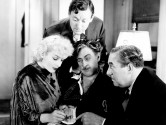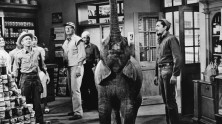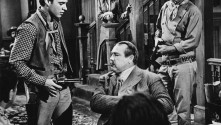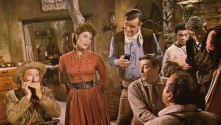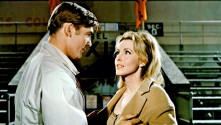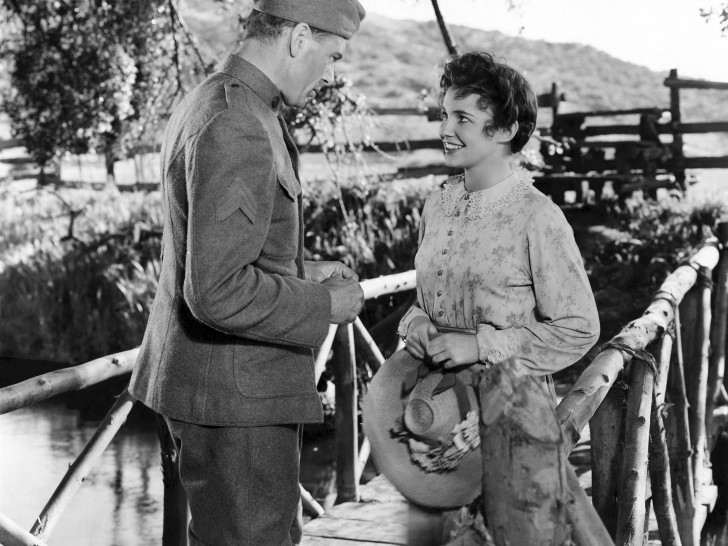
Hawks’ highest-grossing success, and his only film to earn him a nomination from the Academy, was this rousing coming-of-age drama about decorated US Army Lieutenant Alvin York, a real-life figure whose path from juvenile delinquency to national heroism was tailor-made for the screen. As portrayed by Gary Cooper, York is an irresponsible rube from the backwoods of Tennessee who nevertheless emanates fundamental decency, making his eventual, belated embrace of Catholicism, spurred on by the local pastor (Walter Brennan), feel like a natural outgrowth of his character. Internal dilemmas arise when the draft comes knocking, but York, after much deliberation, accepts military service as the moral path and goes on to lead in the historic capture of over one hundred enemy soldiers. In the dark years of WWII, Sergeant York’s earnest portrait of rural Americana, deep Christian faith, and rousing nationalism proved a winning formula, making it one of the era’s critical pieces of war propaganda in spite of how little combat it actually dramatizes. The bulk of the film’s narrative is instead concentrated around Tennessee, an idyllic swath of heartland recreated in the studio with remarkable painted backdrops and carefully weathered props, all of which enable Hawks to indulge a pictorialism unique to his filmography.
Part of film series
Screenings from this program
Gentlemen Prefer Blondes

His Girl Friday

The Big Sleep (pre-release version)

A Girl in Every Port

The Cradle Snatchers / Paid to Love

Fazil

Fig Leaves

Man's Favorite Sport?

The Crowd Roars

Today We Live






